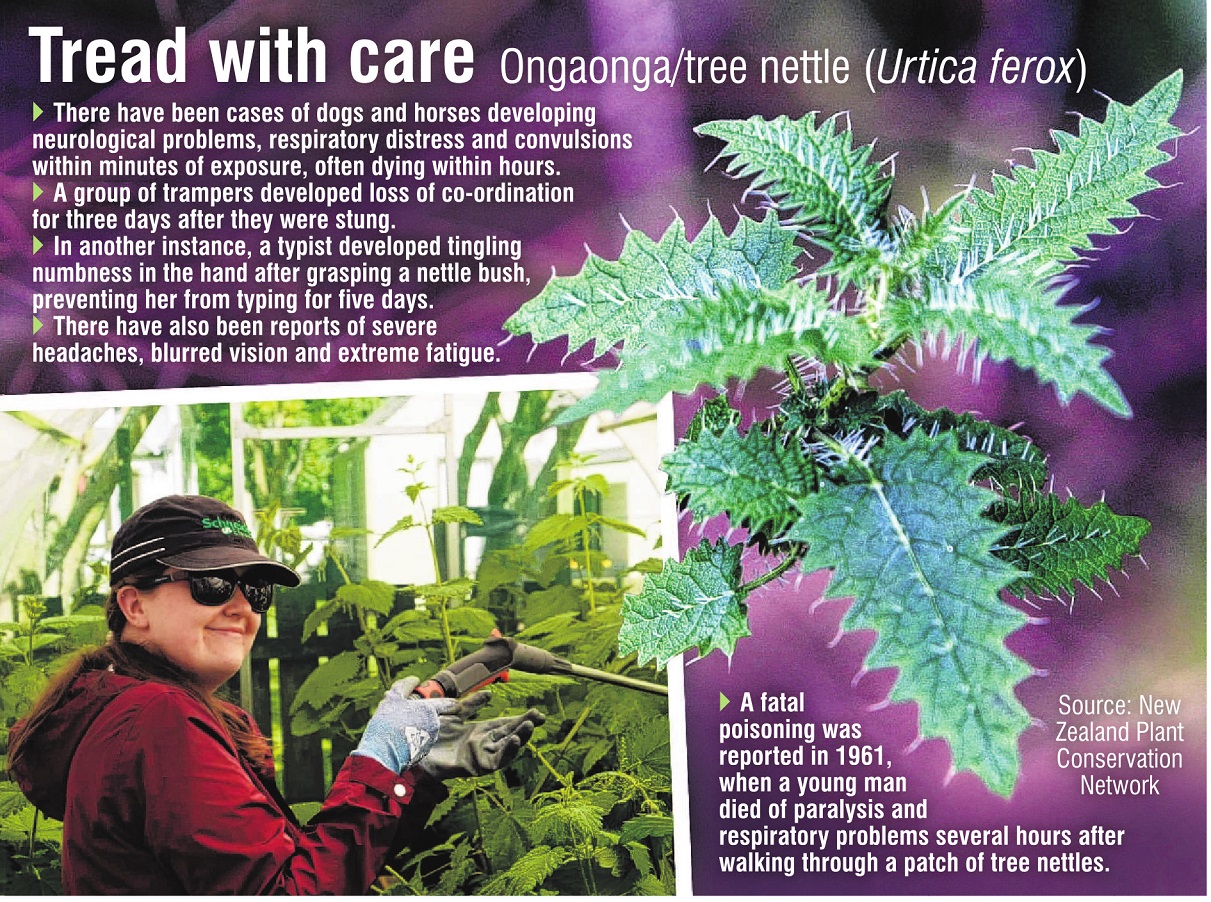Enough stings from an ongaonga plant can leave you with pain and a rash at the very least, but in the worst cases it can cause neurological problems, respiratory distress, convulsions and even death.
University of Otago zoology master’s student Greer Sanger has been taking plenty of precautions when working with what is known to be one of New Zealand’s most poisonous plants.
She plans to plant the native species, also known as tree nettle (Urtica ferox), at the Orokonui Ecosanctuary next week.

"It turns out, the plant’s painful spines create the perfect safe place for these butterflies to lay their eggs and support their growth."
The butterflies visited the ecosanctuary to feed on the nectar of all the native flowers there, and she planned to plant about 25 ongaonga plants there next Thursday to attract more to the area, Miss Sanger said.
"We are hoping the nettles will flourish and be a great new source for these kahukura to lay their eggs."
The plants stand about 2m tall and have coarsely toothed leaves with numerous white stinging hairs (trichomes).
These are hollow cylinders with tapered points, which break after piercing the skin, injecting toxins into the tissues.
There have been cases of dogs and horses developing neurological problems, with respiratory distress and convulsions within minutes of exposure, often dying within hours, and there are also reports of people being affected by it for up to five days or being killed by it as well.
The plants destined for the ecosanctuary were raised from seeds in a greenhouse and had to be handled very carefully, she said.
"We wore long plastic dishwashing gloves or garden gloves with plastic protection on one side.
"The stingers are quite large so they can easily go through material gloves.
"We also wore raincoats — tight weave canvas style, not plastic — to help prevent stings while we walked between the massive nettle plants to water them.
"I also wore sunglasses while watering as extra safety because they were up on tables making them at eye height."

"The pain varies, depending on the plant’s quality I think, but the pain really isn’t that bad.
"It lasts about an hour, just a stinging sensation but nothing like a bee or a wasp, far less painful.
"Rubbing some dirt or dock leaf on areas where you have been stung helps ease the pain.
"I imagine if you fell into a bush of ongaonga and got many stings all over you, you probably wouldn’t be having a great time.
"But it’s important to remember these stingers actually help protect kahukura and kahukowhai [yellow admiral butterfly] eggs, caterpillars, and pupa from predators while they develop.
"Without nettles, our endemic kahukura butterfly would go extinct."











